Plant of the Month: Pua Kala
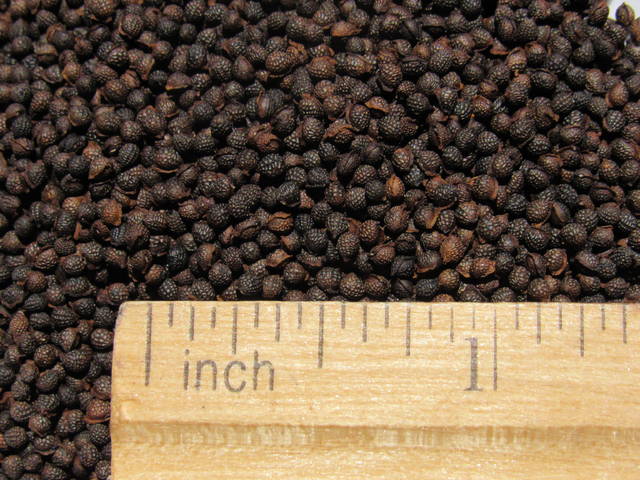
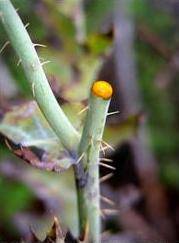
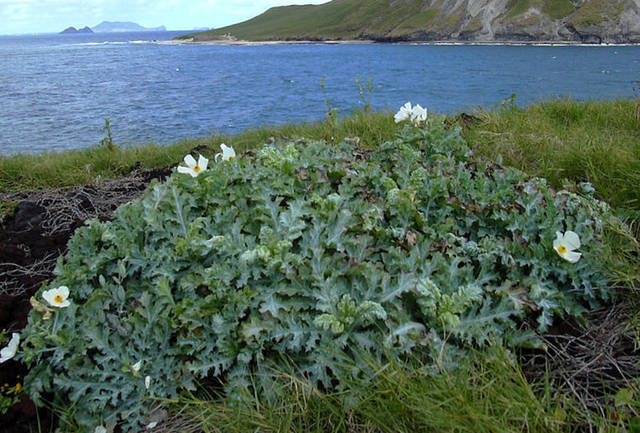
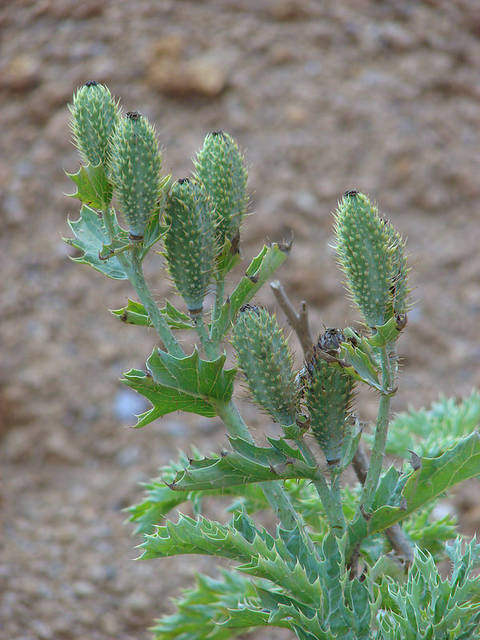
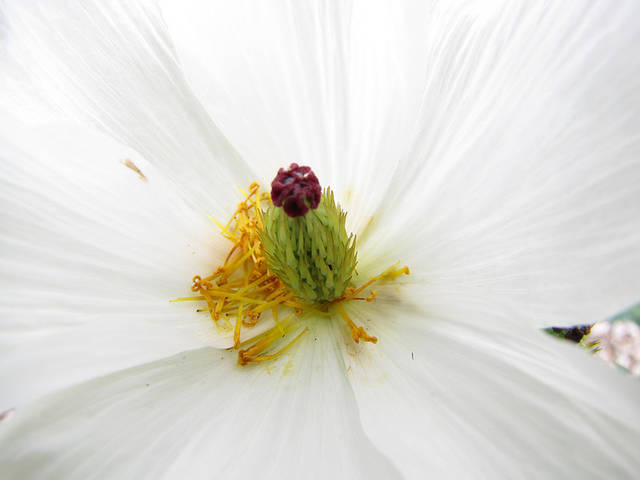
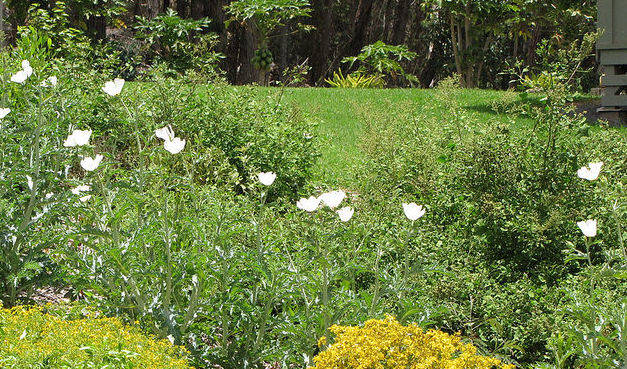
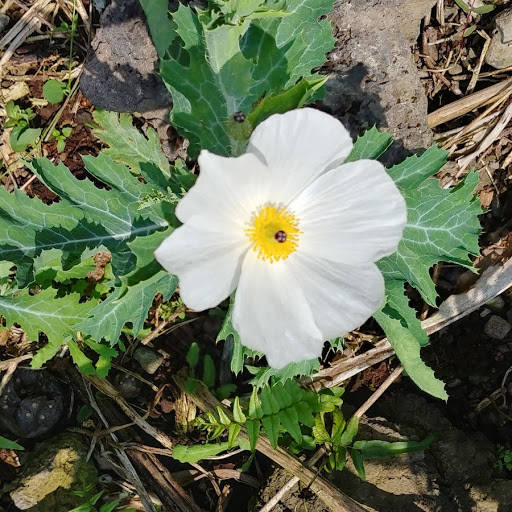
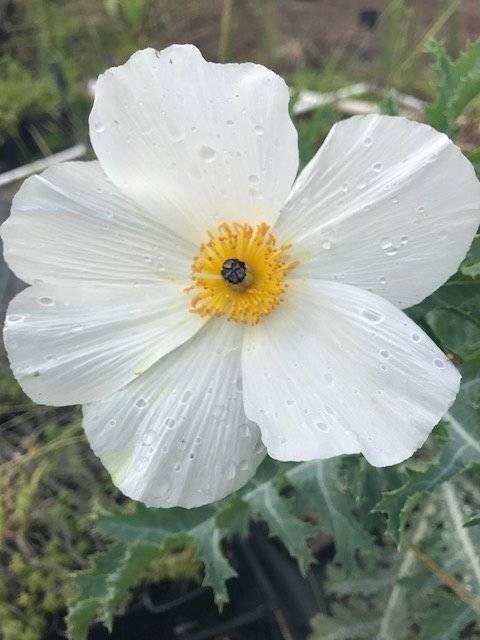
Anyone with a dry, sunny spot on their property might want to consider planting the native Hawaiian poppy known as pua kala. The plant produces showy white flowers pretty much year round that mature into attractive gray-green pods that are filled with seeds. Plant a single plant and soon you’ll have a small cluster or even a hedge.
Anyone with a dry, sunny spot on their property might want to consider planting the native Hawaiian poppy known as pua kala. The plant produces showy white flowers pretty much year round that mature into attractive gray-green pods that are filled with seeds. Plant a single plant and soon you’ll have a small cluster or even a hedge.
The Hawaiian pua kala is in the Papaveraceae, or poppy, family and in the Argemone genus. It is the only poppy native to Hawaii and is endemic, which means it is not native to any other part of the world. Pua kala is, however, somewhat similar to the yellow flowering Mexican poppy, Argemone mexicana that has been introduced and naturalized here.
The genus name Argemone is a derivative of the Greek word argema which means cataract. This name refers to the use of the sap of the poppy which was reputed to be a cure for cataracts as well as other medical problems.
Two types of pua kala are native to different parts of the state. The glauca species was originally growing in many areas of the main islands between sea level and 2,000 feet, mostly in dry woodlands on the leeward side. On the Big Island it is native to South Point. The name glauca is also a Greek derivative that refers to the bluish cast created by the gray-green color of the poppy’s leaves.
The species decipiens had a native habitat limited to the dry sub-alpine areas on the Big Island leeward of the saddle between Maunakea and Mauna Loa from 2,000 to 6,500 feet. It is distinguished by the number of prickles on its capsules. It has twice as many as glauca. The botanical name decipiens relates to the Latin word deceptum that means deceptive or misleading, probably referring to its very specific and somewhat inaccessible native habitat.
The Hawaiian name pua kala literally means thorny flower, thus the apt common name in English of “prickly poppy.” This Argemone shares a Hawaiian name with the native lobelia (Cyanea solenocalyx) that also has prickly leaves. The native habitat of the lobelia is the gulches of Molokai, however.
Pua kala has an herbaceous growth habit and can grow in clumps that may reach 4 feet tall in some locations. The individual plants can be somewhat sparse. Growing them close together can make a nice hedge, however.
The spiny stems of the pua kala are erect and branched and can spread up to 4 feet wide. The leaves are alternate and deeply lobed with whitish veins. They are also covered with small spines as are the seed pods. The blue green color of the leaves, stems and seed capsules lend the plant an overall glaucous blue-green cast. The ubiquitous sharp prickles actually make this an ideal plant for protecting an area in your landscape from foot traffic.
Pua kala’s attractive flowers appear sporadically year round. They usually measure about 3 inches across with six bright white crinkly petals and a yellow-orange center. The center’s numerous yellow-orange male stamens surround a dark purple, lobed female stigma. The flowers stay open for a single day and once pollinated become attractive seed pods. New flowers will usually open daily during blooming periods.
The seed pods are erect, oblong, gray-green capsules that are prickly. They eventually dry to a dark brown and split open, exposing numerous dark brown seeds. You can collect the seeds or allow them to fall and germinated on site.
Seeding is the best propagation method for pua kala. Though the seeds take a long time to germinate, they eventually will do so when conditions are ideal. Seedlings initially need regular watering when the top of the soil dries out. Full sun is preferred for best growth and flowering potential. They can tolerate partial sun but will flower less, look scraggy, and be more likely to topple.
New plants should do well planted in dry, sunny and even rocky areas from low to upper elevations in soil that drains well. Pua kala is one of the few plants that can tolerate very dry, windy locations even in poor soil. They are also very wind and heat tolerant as well as fire tolerant. They are known to sprout in areas that have recently been burned.
Mature pua kala plants are drought tolerant and will do best when allowed to dry out between waterings. Overwatering can make the plants top heavy and cause them to fall over. Deep watering once or twice a week is better than short daily watering.
One of pua kala’s assets is its minimal maintenance requirements. Few pests bother pua kala. Even cattle will not eat this plant. Occasional checking for problems is advised but treatment is rarely required. Even fertilizing is optional. Though light additions of plant nutrients won’t hurt, over-fertilizing can cause unnatural, large growth and the tendency to topple.
Pruning is only needed when primary stalks start to age and wither. Once they are cut back new shoots will usually emerge near the base of the plant. This is a way to keep the plants low. Cutting off spent flowers and removing seed pods regularly can encourage flowering but is not necessary.
Single pua kala plants may have a short life span of five years or less. You might want to continue growing new plants to replenish older ones as they die. Collecting seeds regularly is advised since pua kala plants can become weedy if left untended.
Pua kala is one of our only endemic plants with prickles or thorns. It is unclear why they developed though since they did not initially need protection from predators. Their thorns, as well as their acrid taste, have protected them well in the centuries since ungulates have arrived, however. No cattle, goats, sheep or pigs will eat them. The prickles on the leaves can also be advantageous in directing people away from areas where they are growing.
Pua kala is one of the few toxic native Hawaiian plants. It does not contain morphine or codine like the opium poppy (Papaver somniferum) rather it contains alkaloids that can irritate the stomach and intestines. Only a very few poisonings have been reported, however, due to its extremely bitter taste. Despite its toxicity, early Hawaiians used the yellow latex sap and the seeds for toothache pain, ulcers and nerve pain as well as externally for warts.
Pua kala makes an excellent specimen plant, especially as a lovely addition to a native Hawaiian landscape. It will also do well in containers or as part of a hedge. In pastures or areas that ungulates frequent pua kala can work as a lovely natural border keeping unwanted grazers from entering fragile areas.
Though some aspects of the pua kala that may seem negative, those are certainly outweighed by its positive qualities. The beautiful contrast of its brilliant white flowers with the attractive spiny bluish-gray foliage is certainly a plus. Add this to other attractive features including its adaptability to many difficult growing conditions and its low maintenance requirements and you have a plant well worth considering for your garden.
Pua kala seeds are available at the Community Seed Library at the Kailua-Kona Public Library. You can call around or visit garden centers to see if you can find plants locally.
Diana Duff is a plant adviser, educator and consultant living in a dryland forest north of Kailua-Kona.
Gardening Events
Saturday: “Container Gardening” from 10-11 a.m. at the Kailua-Kona Public Library at 75-138 Hualalai Road in Kailua-Kona with Merrilyn Drews and Diana Duff. The two gardeners will share their expertise in growing plants in containers in Hawaii. They will cover the best plants, containers and soil to use as well as the care and maintenance of container grown plants. Free and open to the public. Call the library at 327-4327 for more information.
“Work Day at Amy Greenwell Garden” from 9 a.m. to 12:30 p.m. Meet at the Garden Visitor Center across from the Manago Hotel in Captain Cook. Volunteers will be able to help with garden maintenance and are invited to bring a brown bag lunch. Water and snacks provided. Call Peter at 323-3318 for more information.
Farmer Direct Markets
Wednesday: “Hooulu Farmers Market” 9 a.m. to 2 p.m. at Sheraton Kona Resort &Spa at Keauhou Bay
Saturday: “Keauhou Farmers Market” 8 a.m. to noon at Keauhou Shopping Center
“Kamuela Farmer’s Market” from 7 a.m. to noon at Pukalani Stables
“Waimea Town Market” from 7:30 a.m. to noon at the Parker School in central Waimea
“Waimea Homestead Farmers Market” from 7 a.m. to noon at the Waimea Middle and Elementary School Playground
Sunday: “Pure Kona Green Market” 9 a.m. to 2 p.m. at Amy Greenwell Garden in Captain Cook
“Hamakua Harvest” 9 a.m. to 2 p.m. at Highway 19 and Mamane Street in Honokaa
Plant Advice Lines
Anytime: konamg@ctahr.hawaii.edu
Tuesdays and Thursdays: 9 a.m. to noon at UH-CES in Kainaliu – 322-4893
Mondays and Fridays: 9 a.m. to noon at UH CES at Komohana in Hilo 981-5199 or himga@hawaii.edu


